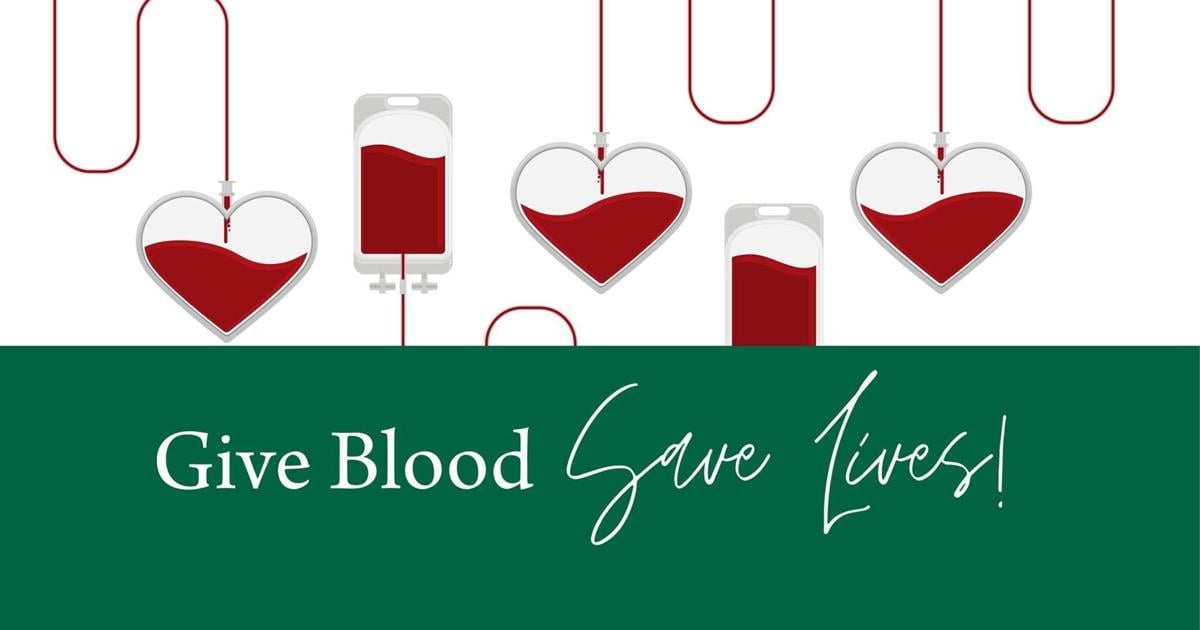Blood
Blood donations needed around holidays, officials say
PLATTSBURGH — As blood supply demand increases and blood donations decrease around the holidays, the Adirondack Regional Blood Center encourages all those eligible to make an effort to donate blood this season.
According to their website, the Regional Blood Donor Center, coordinated by The UVM Health Network — Champlain Valley Physicians Hospital, relies on the generosity of donors to collect and supply blood to patients at CVPH and other hospitals in Elizabethtown, Malone, Massena, Saranac Lake and Glens Falls.
Morgan Maye, lead medical technologist at the blood bank, said the current blood supply is adequate to meet the needs of patients and blood product requests throughout the North Country for surrounding area hospitals.
“However, that can always change barring a trauma. Additionally, we struggle with our blood supply around the holidays because we generally see a decrease in donations,” Maye said.
LOCAL BLOOD SUPPLY
Type O blood types have the highest demand; especially O negative, as this is the universal blood donor type.
The Adirondack Regional Blood Center supplies blood products to hospitals throughout the North Country.
Locations include but are not limited to Alice Hyde Medical Center, Elizabethtown and Ticonderoga campuses, Adirondack Medical Center, Massena Memorial Hospital and The University of Vermont Medical Center.
According to Hope Costin and Nancy Roberts, donor RNs at the Adirondack Blood Center, the blood center collects close to 7,000 units per year; late spring is a busy time for collections due to scheduling with schools and summer being the least busy due to vacations and other activities.
“March through June are the months we receive the most donations. January and February are less busy because of the weather in this area,” Costin said.
FROM DONATION TO TRANSFUSION
According to the American Red Cross website, there are six steps donated blood will take on its journey from donor to patient including the donation, processing, testing, storage, distribution and transfusion.
The donation step includes your health history and a brief physical, as well as the collection of about one pint of whole blood and several small test tubes for testing, which is kept on ice before processing.
The processing step includes separating the whole blood donation into its transferable components, red cells, platelets and plasma.
During the testing step, the donor’s blood undergoes several tests to determine blood type and test for any infectious diseases; results are confidential and the donor is notified.
Units suitable for transfusion are labeled and stored. Red cells can be stored in refrigerators at 6 degrees Celsius, or 42 degrees Fahrenheit, for up to 42 days.
Platelets can be stored at room temperature in agitators up to five days and plasma is frozen and stored for up to one year.
The distribution process includes distributing blood products to hospitals when requested or during emergencies.
The final step, transfusion, includes the process in which a blood transfusion is given to a patient for a number of reasons.
“Many people are afraid to donate because it may hurt or they may ‘pass out.’ We have very skilled staff that will walk you through the procedure with minimal risk,” Costin said.
“It is very unusual for a donor to pass out. We ask that you eat well before the donation and eat and drink before you leave the donation area. This ensures your donation will go well.”
DONATION GUIDELINES
Anyone who is reasonably healthy, weighs at least 110 pounds and is 16 years of age or older may donate; anyone 16 or 17-years old must have a parent or guardian’s permission to donate.
“Anyone that can donate should donate, even if it is just once per year. There is no substitute for blood,” Roberts said.
According to Costins and Roberts, there is a persistent struggle to maintain an adequate supply of platelets.
The Adirondack Regional Blood Center holds blood drives Monday through Friday and walk-ins are welcome; any drive open to the public is listed on their website or advertised through local media.
Whole blood may be donated once every eight weeks, or 56 days, while plasma and platelet may be donated more often.
“If one cannot donate, they can ask someone to donate in their place. They can help organize a drive or volunteer at a drive,” Roberts said.
For more information visit https://www.cvph.org/departments-and-Programs/Blood-Donor-Center/ or call the the donor center at 518-562-7406.

